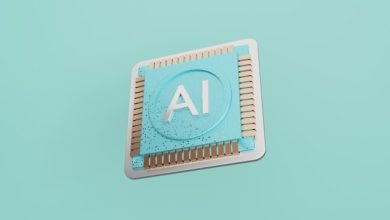
We’re entering Work 4.0 – a new era in which agentic AI is no longer experimental. The autonomous contextual-reasoning technology is being embedded into daily operations, decision-making and product delivery across industries. Unlike traditional automation, agentic AI doesn’t just follow instructions – it assesses independently, takes initiative, interacts with environments and makes decisions in pursuit of goals. This shift – a great leap in AI tech and work life as we know it – brings with it both enormous potential and significant responsibility.
Organizations are moving quickly to harness agentic AI for software development, support automation, operations and knowledge management. At Criteria, for instance, we’re already seeing real-world outcomes: more than 80 percent of our production code is touched by AI-assisted engineering. Another example: 94 percent of our front-line support questions are answered instantly, driving a better candidate experience and reducing friction during the talent acquisition process. All of our internal teams now routinely collaborate with agents to test, draft and even strategize.
But the question isn’t just how fast we can deploy this tech – it’s how well we do it. Companies need to approach agentic AI with the same care and thoughtfulness they apply to human talent, because that’s the new paradigm: collaboration rather than replacement. Work 4.0 is not about humans doing less, it’s about humans doing more of what is uniquely human. With that in mind, there are three critical considerations for companies implementing agentic AI today:
1. Designing Human-AI Collaboration
Few agentic AI systems are actually autonomous in the strict sense of the term. Agentic AI is most powerful, and is most likely to hit its intended targets, when paired with human oversight, empathy and judgment. Leaders should focus on where humans provide irreplaceable value – in areas like ethical decision-making, cross-functional problem-solving and people leadership – while designing workflows that position AI to take on repeatable, goal-directed tasks. This is where the real productivity lift happens. When humans lean into their strengths – creativity, empathy, adaptability – AI becomes the ultimate partner, amplifying rather than replacing human capability.
2. Redefining How We Hire and Build Teams
The shift to Work 4.0 changes the skill sets needed in practically every industry. Rigid hiring practices that rely on degrees or linear experience are falling behind. In a world where AI agents can generate perfect résumés, we need better signals. That means investing in methods that uncover adaptability, curiosity and critical thinking – the traits that help humans thrive alongside AI.
3. Balancing Innovation With Risk and Trust
Agentic AI introduces unique risks – from hallucinated decisions to loss of traceability in high-stakes workflows. Companies must embed transparency, explainability and fail-safes into the design. Just as importantly, we must communicate clearly to employees about how AI is used and why. Trust and adoption go hand in hand.
A recent analysis from McKinsey & Company entitled “Seizing the Agentic AI Advantage” highlights a “gen AI paradox,” in which an imbalance exists between horizontal and vertical AI cases – or between enterprise-wide systems and function-specific tools. Although the former have profligated quickly and the majority of the latter remain in their earliest stages of development, McKinsey & Company note that “AI agents offer a way to break out of the gen AI paradox. That’s because agents have the potential to automate complex business processes – combining autonomy, planning, memory and integration – to shift gen AI from a reactive tool to a proactive, goal-driven virtual collaborator.”
Essentially, the great potential of agentic AI lies in its ability to bypass certain human inputs and iterative data analysis, improving efficiency and accuracy by allowing automated agents to make low-level decisions based on prescribed best practices, organizational preferences and other contextual factors. Already, agentic AI can offer profound organizational benefits by automating and enhancing travel planning, personal workflows and supply chain inventory and purchasing, among other tasks.
Yet the inception of agentic AI isn’t the sea change it may initially appear to be. Two elements that will be as critical to implementing the agent-driven technology, just as they were for generative AI before it: data and humans. Data ensures AI’s functionality but humans ensure its purpose. Data security and the trustworthiness of data (especially, in some cases, across separate ecosystems) are the foundations AI functionality is built upon. And so, too, are the humans who choose, vet and program that data.
Recently, the IBM Institute for Business Value published a study that supports the vision of a future workplace in which people are as essential as AI technology. While 86 percent of CEOs surveyed said that by 2027, process automation and workflow reinvention will be more effective because of AI agents, 84 percent of them also believe that AI agents will collaborate and transfer knowledge with humans.
The payoff, if done right, is enormous. Agentic AI, when human-aligned, unlocks new capacity, enhances creative problem-solving and enables organizations to move faster without sacrificing quality or control. But its success depends on thoughtful implementation, continuous learning and a people-first mindset.
Work 4.0 is about unleashing human greatness, not diminishing it. Talent and technology aren’t competing forces – they’re collaborative inputs. The companies that embrace that tenet will build teams, products and systems that are not only more efficient but also more resilient, inclusive and human-centered.





